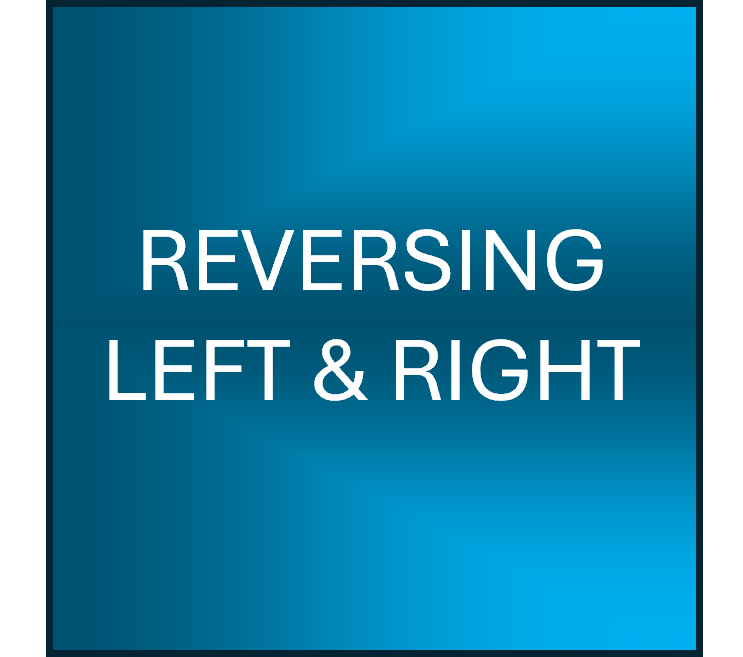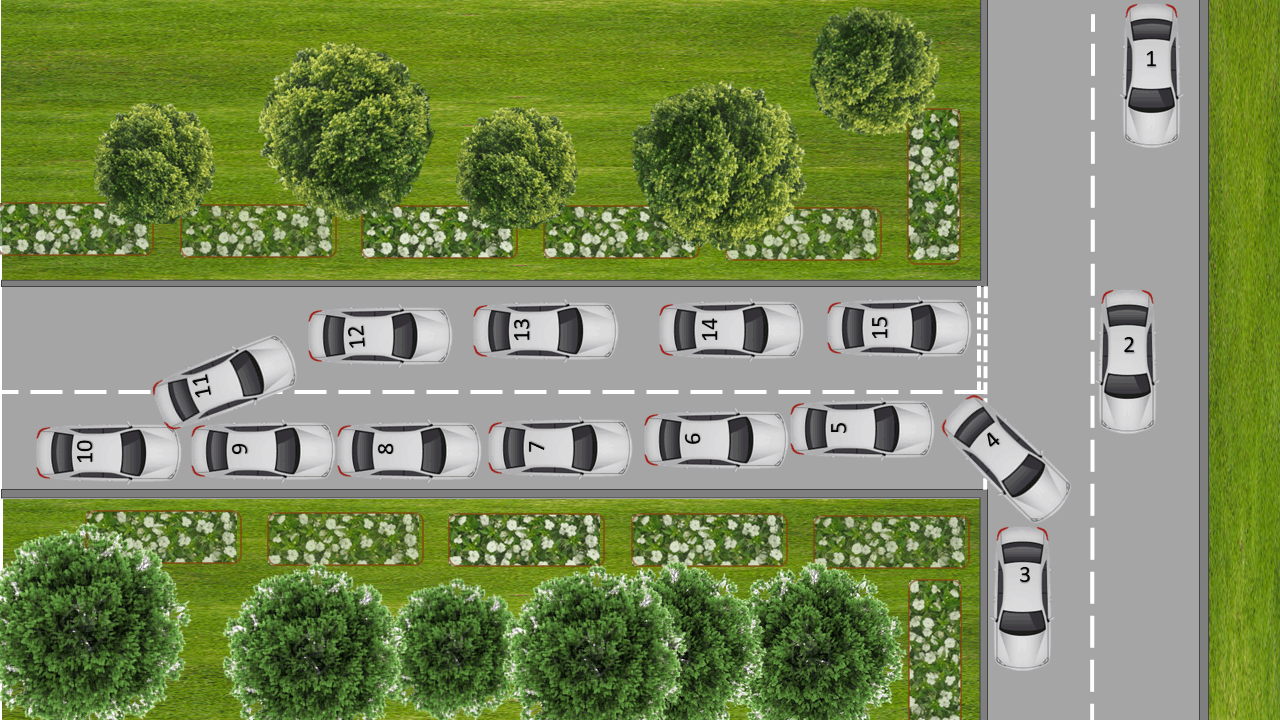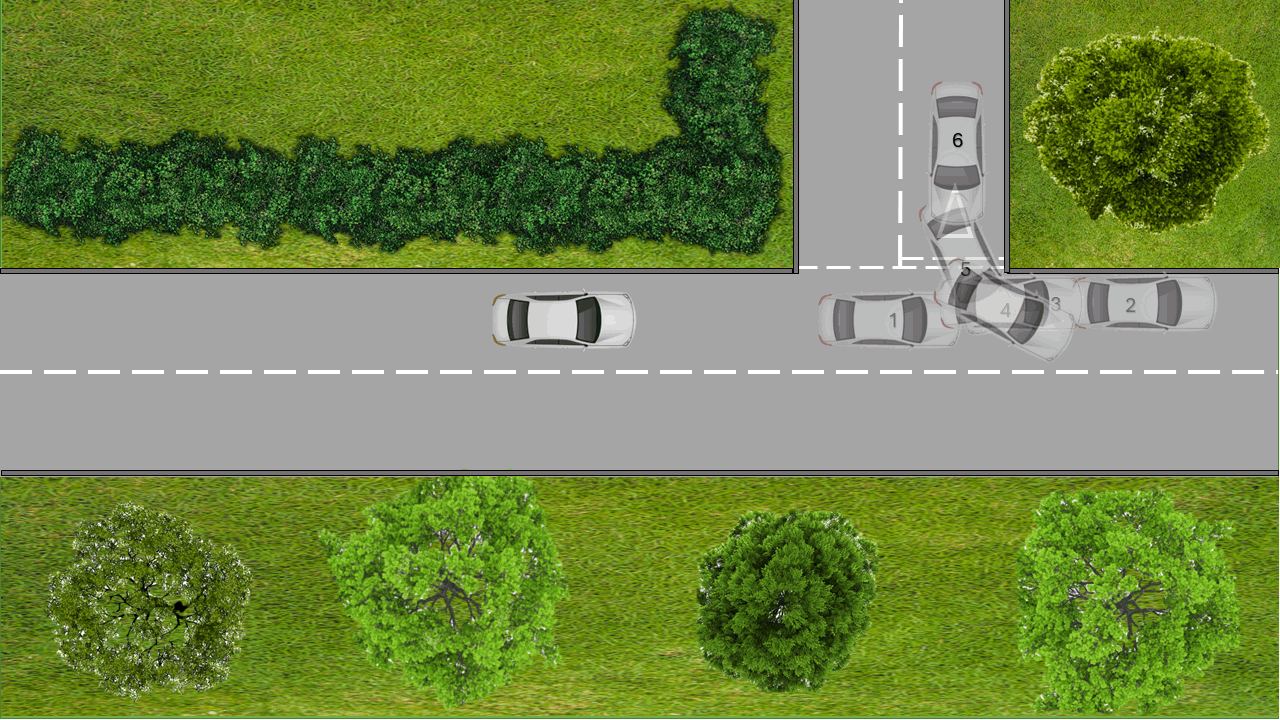
Reversing right & left around a corner.

Reversing right & left around a corner.

Some say this is slightly easier than reversing into a junction on your left, however, both carry their own level of danger.
When performing this manoeuvre, you are the odd one out, doing something that no one else is doing, so make your intentions clear to other road users.
When reversing right into a road you need to use the MSPSGL routine as you would if you were actually turning into the road normally.
The only difference is that you right hand signal would be placed on after you have passed the junction.
As you pass the junction, look into it to see that the road is clear for the manoeuvre to be carried out.
You will need up to 8 car lengths clear on the right hand side of the road you are turning into away from the end of the junction.
At position 1 once you have passed the junction and it clearly would not be a case of wanting to turn into the junction in the normal manner, is when you would place on you right hand signal.
When safe to do so (position 2) move onto the right hand side of the road.
By position 3 you should have stopped reasonably close to the kerb and not too far past the junction.
Place car into reverse, (possibly keeping you right hand signal still applied) and start very slowly reversing along the road.
At position 4, and before turning the steering, check ahead, behind and to your sides to ensure that it is safe to continue.
Are there any cars coming from any direction?
If there is WAIT! remember you are the odd one out.
Wait and see what other traffic (or pedestrians do) and when safe slowly continue, all the time keeping effective observations all around you.
Once in the road (position 5) continue to reverse up to 8 car lengths along the road so that when you rejoin the left hand lane (position 10) you have left enough space in front of you to not interfere with any other vehicles that may be turning into the road.
Before moving off from position 10, carry out a 360 observation check to ensure it is safe to move off.
At the end of the road use your normal routine for emerging from a junction.
The reason why some drivers may say carrying out the manoeuvre into a junction on their right, is because they will be capable of seeing the kerb a lot easier than they will when reversing into a junction on their left.
It would be far more beneficial for vehicles that do not have side windows such as vans.

A much quicker way to change direction than reversing right into a junction but also carries it's own dangers.
Usually when either of these types of manoeuvre are required, it is because there is not a Roundabout close and maybe the road you are in is too narrow to perform a turn in the road with ease, or there may be lots of parked cars in the road you are on which would restrict carrying out a turn in the road.
As with Reversing right into a road, reversing left is dealt with in the exact same manner, however, this time you will be reversing into a road that will leave you facing in the correct direction as the flow of traffic and on the correct side of the road.
As with the right reverse, you will need to pass the junction you want to reverse into to ensure that it is safe to perform the manoeuvre.
If it is safe, and once you have passed the junction, place on a left hand signal to notify other drivers and pedestrians of your intentions.
Once clear of the junction, pull in alongside the kerb and not too far past it, as you want to reverse the least distance possible.
Place the gears into reverse, and if you feel it would benefit others keep your left signal going. I the daytime, your vehicle may just look like a parked car, by keeping the signal on it will allow other road users to see that your car is an "active" car.
Begin reversing your car along the road.
At your point of turn, check ahead, to your right and sides to ensure it is safe to carry on with the manoeuvre.
If there are other vehicle or pedestrians close then stop and wait until it is safe to continue.
Your steering needs to be adapted to suit the angle of the corner. Some are slight and will need gentle steering placed on, whereas others are quite tight and will need lots of steering placed on.
You want to ensure that your vehicle does NOT cross the centre line of the road that you are reversing into, so as to not affect anyone else that may arrive part way through the manoeuvre.
When reversing left into a road, you will only need to reverse into the road as far as is needed so you are clear of the original road and enough to pull forwards to position the car as you would when emerging right from a junction.
If at any stage during the manoeuvre, other vehicles or pedestrians arrive at the junction STOP and assess what their intentions are before continuing.
At no stage should you consider reversing from a minor road into a major road, this could be quite dangerous.